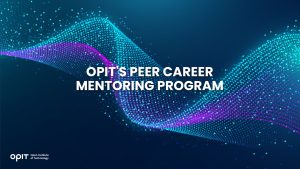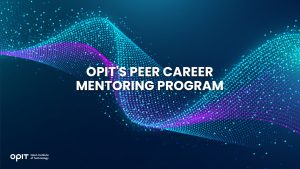

When you decided to study for a BSc in Computer Science, you put your technical hat on. With reams of coding to wrap your head around (alongside a lot of technical talk about hardware), you’ve set yourself up for a career that could cover everything from software engineering and web development to data analysis.
But there’s another possibility that you may not have considered – engineering. Here, we answer the question “Can I do engineering after BSc Computer Science” and show you why the engineering path may be the right one to follow (both due to interest and potential career payout).
Options for Pursuing Engineering After BSc Computer Science
You have three options for pursuing engineering once you’re in possession of your BSc in Computer Science, some of which give you indirect entry into the field whereas others offer more practical or specialized education.
Lateral Entry into Engineering Courses
Your first choice is a course that combined the best of both worlds – a Bachelor of Engineering (Computer Science), otherwise known as B.E. Computer Science. As another full-time course, this program is usually spread over four years (though some institutions can fast-track you through a two-year course).
Strong high school scores in physics, math, and chemistry are a must if you decide to go down this route, with a minimum of 75% scored across all (with strong proficiency in English to boot). Assuming you hit those criteria, many colleges ask students to complete the Joint Entrance Exam (JEE), which is an exam that assesses your technical abilities and how you can apply those abilities to practical problems.
Master’s Degree in Engineering
Rather than going back to the bachelor’s level to study engineering after finishing your BSc in Computer Science (which is a lateral step as described above), you could keep marching forward. A Master’s degree in engineering is a post-graduate qualification, with most courses requiring you to have a Bachelor’s degree in a suitable technical subject. Engineering is the most obvious choice, though many Master’s programs accept students with computing backgrounds due to the technical nature of their knowledge.
Often called a “terminal” degree, meaning there are no doctorates for the engineering field, a Master’s in engineering should leave you with full accreditation so you can begin a career as a chartered engineer. Thankfully, you don’t usually have to rely on an entrance exam to start the course, as long as you have an appropriate Bachelor’s degree.
Specialized Engineering Courses and Certifications
There’s plenty of crossover between the engineering and computer science paths, particularly when it comes to devising solutions for physical hardware:
- Network Engineering – Designed to equip you with advanced skills in computing (especially in the areas of developing and managing network systems), network engineering courses come in several flavors. Some universities offer them as specialized Master’s programs, assuming you have an appropriate technical Bachelor’s degree. In some cases, you can enter into trainee courses with workplaces that equip you with network engineering skills, with this option sometimes not requiring formal computer science training beforehand.
- Cyber Security Engineering – With cybercrime losses exceeding $10 billion in 2022 (according to the FBI), there’s an obvious demand for people who can engineer systems designed to deter hackers. Specialized programs, such as an MSc in cyber security engineering, equip you with the ability to offer hardware security services and reverse-engineer cyber-attacks. Entry requirements vary depending on your university, though many ask for a minimum second-class degree in a subject like computer science or electronic engineering.
- Applied Data Science – You’ll pick up on some of the technical concepts that underpin data science while studying for your BSc in Computer Science. A Master’s degree in applied data science teaches you the practical side, equipping you with the skills you need to analyze and work on complicated engineering assets. Again, a degree in a technical subject (like computer science) should be enough for most universities, with this course also offering a path into Ph.D. studies in the applied data science and data-based industrial engineering areas.
Benefits of Pursuing Engineering After BSc Computer Science
After having worked so hard to obtain your BSc in Computer Science, the question “can I do engineering after BSc Computer Science?” may not have crossed your mind. After all, you’re equipped to enter the workforce already, so you’re wondering what the benefits of further study may be. Here are three to consider.
Enhanced Career Prospects
Having a joint specialization between engineering and computer science can be your pathway to a higher salary, with specific specializations in applied data science or cyber security engineering veering into six-figure territory.
According to Glass Door, starting salaries for applied data scientists start at around $83,000, though the average is $126,586 per year. Advance in that path until you become a senior or lead data scientist and you’ll find your earnings in the $160,000 range. The same resource suggests the average base pay for a cyber security engineer is nearly as impressive, starting at $92,297 per year, though some organizations offer six-figure contracts for those who have some experience under their belts.
Specialization in a Specific Field
Though a BSc in Computer Science equips you with a ton of foundational knowledge, it can leave you feeling unfocused as potential career paths branch out in front of you. Rather than exploring every one of those branches, shifting into engineering allows you to distill (and build upon) what you already know to create a more focused knowledge base.
In addition to making you more desirable to potential employers (as we see above), a specialization makes it easier to find a job that fits your skill set. You add a layer of polish to your raw skillset, developing an understanding of where your specific talents lie and, more importantly, how you can apply them.
Opportunities for Research and Innovation
Having the skills to access better careers is one thing, but being able to contribute to the development of new technologies can make you feel like you’re making a real difference to the world. Following up your BSc in Computer Science with an engineering specialization equips you with practical knowledge (complementing your technical prowess) to give you the perfect balance for entering into the research world.
As one example, Imperial College London operates a research program that takes a data-driven approach to data science research. Applications of the tech (and ideas) that come from that program are used in fields as diverse as medicine, astrophysics, and finance, allowing researchers to create cross-industry change while working with cutting-edge tech.
Steps to Pursue an Engineering Career Post-BSc
Now that you know that the answer to “Can I do engineering after BSc Computer Science?” is a definite “yes,” there’s one more question to answer:
How?
Step 1 – Research and Choose the Right Engineering Program
Choosing the right engineering program may make you feel like you’re at the starting point of a path that branches out in a dozen directions. Each of those paths has something to offer, though you have to commit to one to become a specialist. Think about what you enjoyed while studying computer science, which, combined with an understanding of your career goals, will help you determine which path leads you toward your passion.
Once you know what you want to study (and why), evaluate the programs open to you using the curriculum offered and the reputations of the programs as your criteria for making a choice.
Step 2 – Prepare for Entrance Exams and Application Process
You’re not going to simply walk into an engineering course because you have a BSc in Computer Science, even if your graduate studies equip you with most of the skills necessary to start a post-graduate engineering course. Some institutions have entrance exams (with the previously mentioned JEE being popular), meaning you need to gather study materials and focus your efforts on passing that exam.
For universities that are happy to accept your BSc in Computer Science as proof of your ability, you still need to complete applications and file them before the appropriate deadlines. These deadlines vary depending on where you apply. For instance, you usually have until the end of June if applying for a program that accepts fall admissions in the United States.
Step 3 – Gain Relevant Work Experience
The more work experience you can get under your belt, especially when studying, the better your resume will look when you start applying for specialized computer engineering roles. Internships and co-op programs can equip you with practical knowledge of the workforce (and help you to build connections), though they’re often unpaid.
If working without pay is a problem for you, accepting part-time or freelance work in an engineering field related to your specialization is an option. Just be wary of burnout if you’re still in the process of completing your studies.
Step 4 – Network With Professionals in the Engineering Field
There’s an old saying that goes “It’s not what you know, it’s who you know.” While that isn’t always the case in engineering (merit and skills go a long way), it still helps to have connections in the field who can point you in the direction of roles and employers.
Attending industry events and conferences (even if you’re not actively looking for a job yet) allows you to hobnob with people who may prove useful when you’re trying to break into the engineering sector. Joining professional associations, such as the Association for Computing Machinery (ACM), offers resources, continuing education, and access to career centers that can help you to get ahead.
Engineer Your Path to a New Career
Computer science and engineering make for good bedfellows, with both fields being highly technical and reliant on you having strong mathematical skills. Perhaps that’s why there are so many attractive (and potentially lucrative) options for specializations, with each offering ways to apply the foundational knowledge you develop during a BSc in Computer Science.
When making your choice, start by figuring out which field grabs your interest before taking the steps described above to reach your career goals.
Related posts

Source:
- Raconteur, published on November 06th, 2025
Many firms have conducted successful Artificial Intelligence (AI) pilot projects, but scaling them across departments and workflows remains a challenge. Inference costs, data silos, talent gaps and poor alignment with business strategy are just some of the issues that leave organisations trapped in pilot purgatory. This inability to scale successful experiments means AI’s potential for improving enterprise efficiency, decision-making and innovation isn’t fully realised. So what’s the solution?
Although it’s not a magic bullet, an AI operating model is really the foundation for scaling pilot projects up to enterprise-wide deployments. Essentially it’s a structured framework that defines how the organisation develops, deploys and governs AI. By bringing together infrastructure, data, people, and governance in a flexible and secure way, it ensures that AI delivers value at scale while remaining ethical and compliant.
“A successful AI proof-of-concept is like building a single race car that can go fast,” says Professor Yu Xiong, chair of business analytics at the UK-based Surrey Business School. “An efficient AI technology operations model, however, is the entire system – the processes, tools, and team structures – for continuously manufacturing, maintaining, and safely operating an entire fleet of cars.”
But while the importance of this framework is clear, how should enterprises establish and embed it?
“It begins with a clear strategy that defines objectives, desired outcomes, and measurable success criteria, such as model performance, bias detection, and regulatory compliance metrics,” says Professor Azadeh Haratiannezhadi, co-founder of generative AI company Taktify and professor of generative AI in cybersecurity at OPIT – the Open Institute of Technology.
Platforms, tools and MLOps pipelines that enable models to be deployed, monitored and scaled in a safe and efficient way are also essential in practical terms.
“Tools and infrastructure must also be selected with transparency, cost, and governance in mind,” says Efrain Ruh, continental chief technology officer for Europe at Digitate. “Crucially, organisations need to continuously monitor the evolving AI landscape and adapt their models to new capabilities and market offerings.”
An open approach
The most effective AI operating models are also founded on openness, interoperability and modularity. Open source platforms and tools provide greater control over data, deployment environments and costs, for example. These characteristics can help enterprises to avoid vendor lock-in, successfully align AI to business culture and values, and embed it safely into cross-department workflows.
“Modularity and platformisation…avoids building isolated ‘silos’ for each project,” explains professor Xiong. “Instead, it provides a shared, reusable ‘AI platform’ that integrates toolchains for data preparation, model training, deployment, monitoring, and retraining. This drastically improves efficiency and reduces the cost of redundant work.”
A strong data strategy is equally vital for ensuring high-quality performance and reducing bias. Ideally, the AI operating model should be cloud and LLM agnostic too.
“This allows organisations to coordinate and orchestrate AI agents from various sources, whether that’s internal or 3rd party,” says Babak Hodjat, global chief technology officer of AI at Cognizant. “The interoperability also means businesses can adopt an agile iterative process for AI projects that is guided by measuring efficiency, productivity, and quality gains, while guaranteeing trust and safety are built into all elements of design and implementation.”
A robust AI operating model should feature clear objectives for compliance, security and data privacy, as well as accountability structures. Richard Corbridge, chief information officer of Segro, advises organisations to: “Start small with well-scoped pilots that solve real pain points, then bake in repeatable patterns, data contracts, test harnesses, explainability checks and rollback plans, so learning can be scaled without multiplying risk. If you don’t codify how models are approved, deployed, monitored and retired, you won’t get past pilot purgatory.”
Of course, technology alone can’t drive successful AI adoption at scale: the right skills and culture are also essential for embedding AI across the enterprise.
“Multidisciplinary teams that combine technical expertise in AI, security, and governance with deep business knowledge create a foundation for sustainable adoption,” says Professor Haratiannezhadi. “Ongoing training ensures staff acquire advanced AI skills while understanding associated risks and responsibilities.”
Ultimately, an AI operating model is the playbook that enables an enterprise to use AI responsibly and effectively at scale. By drawing together governance, technological infrastructure, cultural change and open collaboration, it supports the shift from isolated experiments to the kind of sustainable AI capability that can drive competitive advantage.
In other words, it’s the foundation for turning ambition into reality, and finally escaping pilot purgatory for good.

The Open Institute of Technology (OPIT) is the perfect place for those looking to master the core skills and gain the fundamental knowledge they need to enter the exciting and dynamic environment of the tech industry. While OPIT’s various degrees and courses unlock the doors to numerous careers, students may not know exactly which line of work they wish to enter, or how, exactly, to take the next steps.
That’s why, as well as providing exceptional online education in fields like Responsible AI, Computer Science, and Digital Business, OPIT also offers an array of career-related services, like the Peer Career Mentoring Program. Designed to provide the expert advice and support students need, this program helps students and alumni gain inspiration and insight to map out their future careers.
Introducing the OPIT Peer Career Mentoring Program
As the name implies, OPIT’s Peer Career Mentoring Program is about connecting students and alumni with experienced peers to provide insights, guidance, and mentorship and support their next steps on both a personal and professional level.
It provides a highly supportive and empowering space in which current and former learners can receive career-related advice and guidance, harnessing the rich and varied experiences of the OPIT community to accelerate growth and development.
Meet the Mentors
Plenty of experienced, expert mentors have already signed up to play their part in the Peer Career Mentoring Program at OPIT. They include managers, analysts, researchers, and more, all ready and eager to share the benefits of their experience and their unique perspectives on the tech industry, careers in tech, and the educational experience at OPIT.
Examples include:
- Marco Lorenzi: Having graduated from the MSc in Applied Data Science and AI program at OPIT, Marco has since progressed to a role as a Prompt Engineer at RWS Group and is passionate about supporting younger learners as they take their first steps into the workforce or seek career evolution.
- Antonio Amendolagine: Antonio graduated from the OPIT MSc in Applied Data Science and AI and currently works as a Product Marketing and CRM Manager with MER MEC SpA, focusing on international B2B businesses. Like other mentors in the program, he enjoys helping students feel more confident about achieving their future aims.
- Asya Mantovani: Asya took the MSc in Responsible AI program at OPIT before taking the next steps in her career as a Software Engineer with Accenture, one of the largest IT companies in the world, and a trusted partner of the institute. With a firm belief in knowledge-sharing and mutual support, she’s eager to help students progress and succeed.
The Value of the Peer Mentoring Program
The OPIT Peer Career Mentoring Program is an invaluable source of support, inspiration, motivation, and guidance for the many students and graduates of OPIT who feel the need for a helping hand or guiding light to help them find the way or make the right decisions moving forward. It’s a program built around the sharing of wisdom, skills, and insights, designed to empower all who take part.
Every student is different. Some have very clear, fixed, and firm objectives in mind for their futures. Others may have a slightly more vague outline of where they want to go and what they want to do. Others live more in the moment, focusing purely on the here and now, but not thinking too far ahead. All of these different types of people may need guidance and support from time to time, and peer mentoring provides that.
This program is also just one of many ways in which OPIT bridges the gaps between learners around the world, creating a whole community of students and educators, linked together by their shared passions for technology and development. So, even though you may study remotely at OPIT, you never need to feel alone or isolated from your peers.
Additional Career Services Offered by OPIT
The Peer Career Mentoring Program is just one part of the larger array of career services that students enjoy at the Open Institute of Technology.
- Career Coaching and Support: Students can schedule one-to-one sessions with the institute’s experts to receive insightful feedback, flexibly customized to their exact needs and situation. They can request resume audits, hone their interview skills, and develop action plans for the future, all with the help of experienced, expert coaches.
- Resource Hub: Maybe you need help differentiating between various career paths, or seeing where your degree might take you. Or you need a bit of assistance in handling the challenges of the job-hunting process. Either way, the OPIT Resource Hub contains the in-depth guides you need to get ahead and gain practical skills to confidently move forward.
- Career Events: Regularly, OPIT hosts online career event sessions with industry experts and leaders as guest speakers about the topics that most interest today’s tech students and graduates. You can join workshops to sharpen your skills and become a better prospect in the job market, or just listen to the lessons and insights of the pros.
- Internship Opportunities: There are few better ways to begin your professional journey than an internship at a top-tier company. OPIT unlocks the doors to numerous internship roles with trusted institute partners, as well as additional professional and project opportunities where you can get hands-on work experience at a high level.
In addition to the above, OPIT also teams up with an array of leading organizations around the world, including some of the biggest names, including AWS, Accenture, and Hype. Through this network of trust, OPIT facilitates students’ steps into the world of work.
Start Your Study Journey Today
As well as the Peer Career Mentoring Program, OPIT provides numerous other exciting advantages for those who enroll, including progressive assessments, round-the-clock support, affordable rates, and a team of international professors from top universities with real-world experience in technology. In short, it’s the perfect place to push forward and get the knowledge you need to succeed.
So, if you’re eager to become a tech leader of tomorrow, learn more about OPIT today.
Have questions?
Visit our FAQ page or get in touch with us!
Write us at +39 335 576 0263
Get in touch at hello@opit.com
Talk to one of our Study Advisors
We are international
We can speak in:


